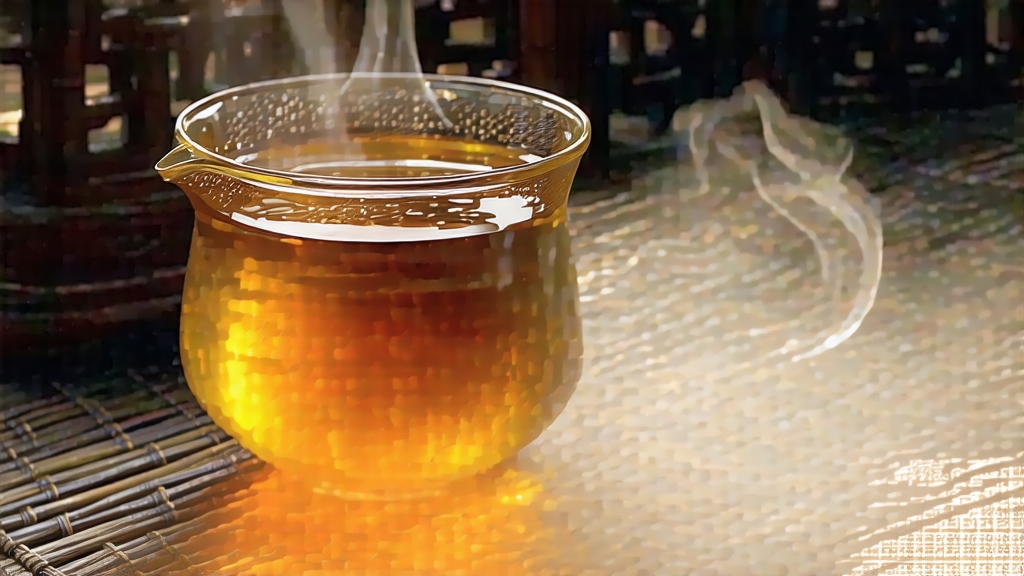
Tucked into the southern folds of Guangxi Province, the small river town of Wuzhou guards a secret that once financed empires and still steadies the pulse of modern tea lovers. Liu Bao—literally “Six Forts”—is the name of both a district and the dark, glossy leaves that have been pressed, steamed, and carried along the Pearl River since the Ming dynasty. While Pu-erh gathers global headlines, Liu Bao quietly ferments in bamboo baskets, developing the same mellow depth but with a signature camphor-cool sweetness that can only be coaxed from the subtropical air of southern China. To understand Liu Bao is to follow a map of trade winds, imperial edicts, and the patience of microbes.
History: From Border Garrison to Imperial Tribute
The earliest written record appears in 1585, when the Ming Ministry of War requisitioned 30,000 catties of “dark tea from Cangwu” to barter for Mongolian warhorses along the northwest frontier. Cangwu is the old name for Wuzhou, and the tea was Liu Bao. Compressed into 40-kilogram baskets, the leaves survived the 2,000-kilometer trek to the Gansu corridor, arriving with their fragrance intact and their value doubled. By the Qing Qianlong era (1736–1795), Liu Bao had graduated from military ration to palace tribute, arriving in Beijing wrapped in dried banana leaves and presented in carved camphor-wood boxes. Empress Dowager Cixi reportedly drank it after meals to “cut grease and calm the stomach,” a reputation that still underpins its popularity in Cantonese dim-sum restaurants today.
Terroir: Where Rivers Breathe Mist
The Liu Bao growing zone sits at 23–24°N, where the Xun and Gui Rivers converge to create a natural humidity of 85–90 % year-round. Granite-derived red soils, rich in iron and potassium, force the tea bushes—predominantly a large-leaf cultivar known as “Yuntaishan zhong”—to send roots deeper, pulling up minerals that later translate into a pronounced petrichor note. Morning river fog slows photosynthesis, increasing theanine and polyphenols, while the afternoon sun slices through the mist just long enough to lock in sugars. The result is leaf that is already sweet and mineral before human hands ever touch it.
Harvest Calendar: Picking the Calendar Moon
Liu Bao is plucked in five seasonal windows, each conferring a different personality. Pre-Qingming shoots (late March) yield the most floral and tannic profile, ideal for long aging. Grain-Rain leaves (late April) balance fragrance and body, becoming the standard grade. Summer “rain tea” harvested during the monsoon carries more bitterness but higher microbial activity, prized by blenders seeking faster fermentation. Autumn “white dew” tea, picked under cool clear skies, is naturally honeyed and needs only light pile fermentation. Finally, winter “snow tea,” picked only on south-facing slopes, is rare, almost white when dried, and reserved for medicinal decoctions.
Craft: The Bamboo Basket Bioreactor
Unlike Pu-erh’s wò duī (wet piling) on cement floors, Liu Bao uses a micro-climate inside woven bamboo baskets called lóng. Fresh leaves are fixed at 280 °C for 90 seconds to kill green enzymes, then rolled for 40 minutes until the leaf surface bruises into a tiger-skin pattern. After 4 hours of sun-withering, the semi-dry leaves are steamed for 20 seconds, packed into 30-kilogram lóng, and wheeled into the “fermentation room,” a humid loft above the river where temperature hovers at 28 °C. Over the next 25 days, workers turn the baskets every 48 hours, allowing oxygen to penetrate the core and aerobic microbes to bloom. The pile temperature is kept below 55 °C by opening windows at midnight, letting cool river air rush in. When the leaf core turns chestnut-brown and emits a scent reminiscent of betel nut and camphor, the pile is dismantled and dried with charcoal embers for three consecutive nights. This charcoal finish lowers moisture to 9 % and adds a whisper of smoky incense that later subsides into dried longan sweetness.
Aging: Time in the Dark
After fermentation, the tea is rested for 45 days in a ventilated loft, then re-steamed and pressed into three traditional shapes: 500-gram tuó